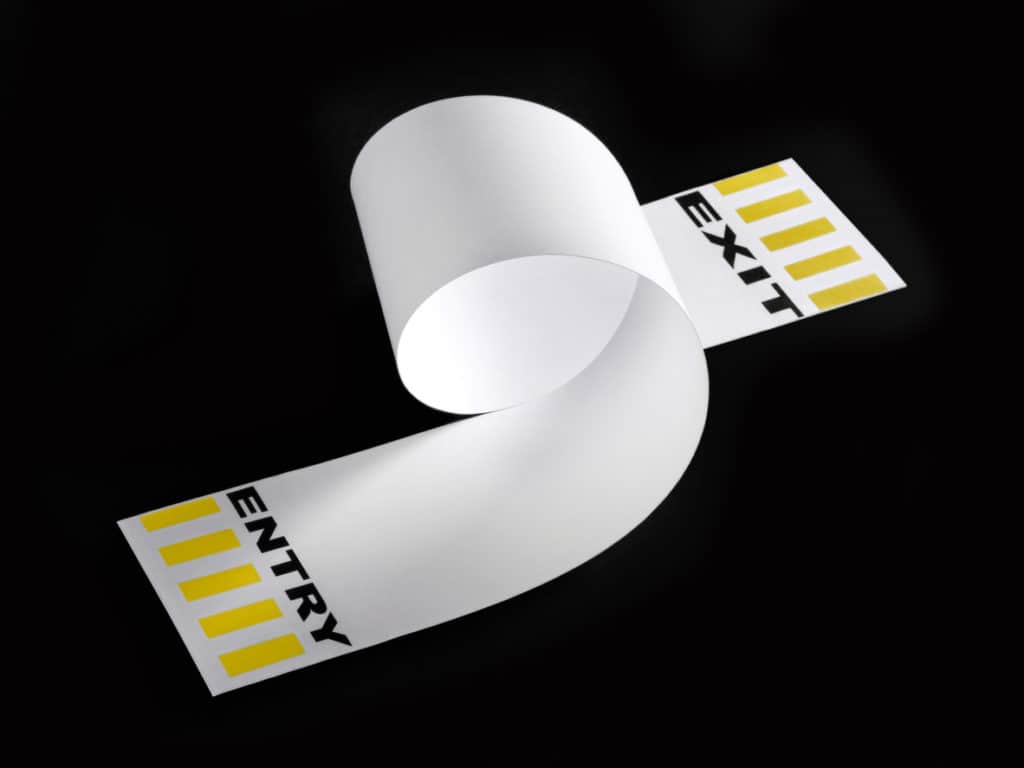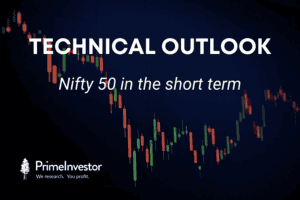Prime Funds is the list of funds that we recommend. This fund list uses Prime Ratings as a first filter, over which we analyse portfolios, strategy, market scenario and much more. Here’s what we aim for, in Prime Funds:

- To have a range of investment styles. This is important, because as we have stressed many times, mixing different strategies is what is needed to build a diversified portfolio. So by ensuring that each Prime Fund is unique, it is easy for you to mix and match what you need.
- To keep it concise. If we had dozens of funds in the list, it could make it confusing to go through and pick the fund that suits you. It would also lead us to have a lot of duplication in strategies and portfolios, which could translate into your portfolio.
- To go beyond just the rating. If we used just the Prime Rating, all 5-star funds would make the cut. But we go by the fund’s strategy, its suitability for a portfolio, whether there are other different funds to be had, and what market conditions are like.
- To avoid being defined by categories. What matters is a fund’s suitability to a particular purpose. Constraining the list to categories could mean fewer options – so in debt funds, for example, we are perfectly comfortable putting a short-maturity fund in a 5+ year horizon as their low volatility and stable strategy make them suitable to form the debt component of long-term portfolios.
We hope that this gives you a better understanding of what Prime Funds is about. With that done, the changes we have made this review cycle is below. We have explained what you should do with funds we have removed from the list. Please read it carefully if you are invested in them. Funds we remove do not immediately warrant a sell – it is just that they have slipped in performance or there are better alternatives now.
Prime Funds – Equity
Equity – moderate
We have made no changes in this category, with funds delivering well across the board. Our dark-horse pick Canara Robeco Equity Diversified is beating the Nifty 500 TRI by a solid 4-5 percentage points on a 1-year basis. the worst 1-month loss it saw in the March-May market meltdown was 30% against the index’s 35%; many peers fell even more.
Parag Parikh Long Term Equity, a completely differentiated fund, also navigated the market well; the margin by which it beats the Nifty 500 TRI has improved to 5-7 percentage points over the past few months. Our value-plays in this set – Kotak Standard Multicap and Invesco India Contra – have both not suffered from the underperformance dogging value funds and remain in the top quartile.
Equity – aggressive
In this set of funds, we have introduced more options in the mid-cap space and gone for a small-cap fund (see table below) with cash holding as conditions line up for aggressive strategies for those with the horizon and risk appetite. While markets are currently sanguine, a correction cannot be ruled out; the drop over 2018 and 2019 in the mid and small-cap space also offer scope for accumulation.
The other funds, mostly from large-and-midcap and multicap, have managed well. SBI Focused Equity, for example, shifted away from its mid-cap heavy portfolio and quickly deployed into large-caps to stymie the impact of correction. The fund has held on to its strong outperformance margin over the Nifty 500 TRI.
The changes we have made the reasoning for these additions are in the tables below.
Strategic/thematic funds
In the thematic category, we have added Franklin India Technology as a defensive play to manage any market correction (which, in our view, may be due). We don’t expect this theme to be a near-term outperformer; IT companies are likely to be hit by cancellation or postponement of orders and also see bankruptcies of smaller clients. Like mentioned below, this fund’s international diversification can help protect the portfolio from local slowdown. If you already hold any of the US-focused funds or the MNC fund we have in this category, you will have ample diversification. Please see table below for more details.
We continue to have UTI MNC in our thematic list given that this portfolio is well placed to face a slowdown. The cash-rich debt free nature of many of the MNC companies also ensures you hold to quality in uncertain times. We have also retained SBI Banking & Financial Services in the thematic category, the near term hit notwithstanding. With a mix of insurance, AMCs, brokerage-related services and other non-banking plays, this portfolio is lot more diversified than many peers and to that extent, we see it being less volatile in the current situation. Please note that this fund will still add excessively to the already heavy banking exposure that your diversified funds will have and is strictly for high -risk investors.
Prime Funds – Hybrid
Hybrid equity, moderate risk
We have been seeing this category gradually change over the past six years. In these years, we have seen few funds stay consistently above average. Two of these were part of the Prime Funds list, which we have now removed (see table below) as performance has slipped owing to their value calls and the necessity to hold them for longer periods than is the norm for this category. Both funds may continue to be held if they are a part of your medium or long-term (at least 4-5 years from now) portfolio. You will soon hear from us on what to do with these funds if you hold them as part of our Prime Portfolio.
The other two funds we have in the list can continue to hold up. Mirae Asset Hybrid Equity, for instance, mirrors a good part of Mirae Asset Large Cap and therefore may not see strategy changes or prolonged performance dips. The has the highest average 3-year return in its category. SBI Hybrid, similarly, is a reasonably consistent performer which has stayed above average over the years, if not always at the top.
The lack of steady funds is among the reasons we have not made any additions to this set in Prime Funds. We also increasingly believe that the role of these funds can be managed with pure equity and debt allocations for the long term, or through lower-risk hybrid funds such as balanced advantage/dynamic asset allocation or equity savings funds for shorter term holdings.
Hybrid equity – low risk
In this set of Prime Funds, we haven’t made any changes. But we want to note the performance of ICICI Prudential Balanced Advantage, which was among the laggards in its category in the market crash.
The fund is an aggressive one; the correction, opened up buying opportunities and consequently, open (unhedged) equity exposure was high. The low returns have since recovered and metrics such as downside capture, volatility and loss probability are not greatly changed. On the debt side, while the fund does have higher-risk papers, the holding in individual issuers is marginal and does not overall pose a risk.
The low-risk option we have here, Kotak Equity Saver, remains among the best in category. It continues to have the fewest instances of 1-month losses in its category and has fallen lesser as well.
Prime Funds – Debt
Liquid funds
We have added SBI Liquid to simply provide more options for those of you wanting more funds in this category. Franklin India Liquid continues to be in this category as we do not see any change in its risk or liquidity profile after the closure of the 6 Franklin debt schemes in April.
Debt – Very short term – 3 months to 1.5 years
It is noteworthy that Aditya Birla Sun Life Floating Rate, one of our picks in this Prime Funds category, surged ahead of peers after a volatile month in March 2020, owing to slightly higher maturity and use of swaps where needed. We think this fund will continue to benefit from the current climate.
But we have added Axis Treasury Advantage to provide less volatile options as well in this space. More details are in the table below.
We have removed Franklin India Savings from our Prime Funds list but have a ‘hold with a cap of 10% on your portfolio. That means you can continue to hold this fund but keep it to less than 10%; prune it to this level if it is more (you will soon hear from us on what to do with this fund if you hold them as part of our Prime Portfolios).
This fund remains at the top of this category in our performance rating assessment. The change in call does not stem from the risks due to the other Franklin funds closing. Nor is it a factor of high credit risk. The fund’s portfolio is in CDs and CPs of large corporate, finance houses, and PSUs and T-Bills.
However, the move to cash to meet high redemptions triggered by the Franklin issue in April – AUM fell by 60% between April and June 2020 – have led to concentration in the top holdings over a 3-month period.
This concentration is in papers of established groups (Kotak Mahindra – 13.1%, Reliance – 11.2%, Hero – 6.1%, Bank of Baroda – 11.6%) and are as such not risky. The farthest maturity date of papers in the portfolio in June 2021. But as a rule, we do not prefer funds with concentrated exposure (as a result of AUM fall) in a very short duration category and do not wish to make exceptions here.
Debt Short term -1.5 to 3 years
Our strategic call in March recommending a mix of funds from this category and the 3-5 year category has worked well providing sharp returns. You will see all the 3 funds in this Prime Funds set (short term as well as banking & PSU debt) sit on double digit 1-year returns now. We want to complement this with less volatile funds that won’t swing too much on rate rallies.
To this end, we introduced HDFC Floating Rate Debt. Although strictly falling under the ‘very short term’ category, we included it here due to its slightly longer maturity profile. Note that this will not return as high as the other funds but can remain more steady across rate cycles.
We have not made any changes to our medium term and long-term debt funds. All of them are delivering very well, making the best of the yield compression. Do also note that we have retained Franklin India Corporate Debt in the more than 5-year space. The fund remains invested in high credit quality papers. The reason for its positioning in the over 5-year category is because of its concentrated holding in corporate groups (which are highly rated ). The time we have given is to allow for the risk-return trade-off.
You can view the full Prime Funds list here. This update on Prime Funds is the third in our review cycle. Next week, we will publish the updates on Prime Portfolios. In this review cycle, we have made no changes to Prime ETFs, our recommended list of ETFs. We have also no changes in Prime Deposits, as we undertook timely changes as interest rates changed earlier in this quarter.




13 thoughts on “Quarterly review – changes in Prime Funds, our fund recommendations”
Hi
I just subscribed few days back. Appreciate all the hard work you and your team have done so far. My query is if you recommend a fund and then few quarters down the line give exit call or hold ot stop SIP , this leads to huge churning. My point is one would need to give fund the time to perform. Not necessarily the fund may always do well, meaning perform consistently quarter on quarter. Not talking of being a top performer here, but above average returns. So the all is i think how long one needs to wait and see if the fund has not performed and hence quit???
Hello, Thanks. Yes at the drop of performance if one exits, it will amount to portfolio churn. We wait long enough before giving exits. However that ‘long enough’ may not coincide with your holding. You may have entered such a fund just a month ago while we may have noted its udnerperformance a year ago. Please read this to know how you can wait and watch or exit – https://primeinvestor.in/how-to-review-your-mutual-fund-portfolio/
thanks
Vidya
If you have removed HDFC Small cap fund from your recommendation list, then why you are giving 4 rating to the fund?
is there is something which am missing? kindly clarify.
Hello sir,
As you have already raised this query as a ticket, we will be responding there. Request you to please route recommendation-specific queries through our customer support system.
Thanks,
Bhavana
You have advised HDFC small cap as ‘hold’ in this article. But, it is a ‘buy’ in mutual fund review tool. why this discrepancy?
Hello sir,
Thanks for pointing out. We have changed it in our review tool. But please note that there can be other funds with a hold where continuing sips is fine. Our hold is not a sell call..it’s either funds that have slipped or improving. We usually call out in the review tool if we want investors to restrict investment in a hold call.
Thanks,
Bhavana
Hello Mam,
3 Questions.
1) UTI MNC fund is not rated on prime ratings. However it is being recommended. Why is this so?
2) Also, ABSL MNC which has a better track record on consistency in terms of rolling returns – how do you compare that with UTI MNC? I understand that ABSL MNC has a slightly higher mid cap tilt than that of UTI but the risk reward seems to better on long term. Please let me know your thoughts. When could we see these funds being rated?
3) We see few AMC venturing the MNC category recently. What is your opinion on Nifty MNC index? I see that it is a silent performer. Even in the great fall of 2008, MNC funds absorbed less shock than that of the so called relatively less risky Large cap funds. I see good downside protection in these funds. I know that they commend higher valuations but wanted to know your opinion on holding them for a 10 year portfolio.
Hello sir,
Can you please raise a ticket through http://www.primeinvestor.in/contact-us on your query? We’d prefer to route recommendation-specific questions through this system.
Thanks,
Bhavana
Mam – I have posted as you mentioned.
Thanks for your reply. I am happy to note your equity team is working for long term investment which will be feather in your cap.
I am basically long term Investor and I booked profit considering , in my opinion, this is more liquidity driven rally rather than based on fundamentals.
As regards, Franklin Templeton, I am upset not because I lost money which is common in any asset class, but because that they did not follow basic rule putting investors money in jeopardy. While it is your prerogative to review Franklin Templeton MF, in my view it is like reviewing Anil Ambani group shares
Sure, sir. thanks, Vidya
I remember you mentioned about Equity direct recommendations from July 2020 but most of your portfolio recommendations are skewed towards Mutual Funds only which is disappointing. Bypassing MF, during recent crash,. I picked up fundamentally attractive stocks at bargain and also exited few days back making good profit. Another irritating point is, grading Franklin Templeton by you even after their ditching investors. This AMC is not reliable and may be black listed. They are no different from blade companies or benefit funds.
Hello Sir, We are glad that you picked stocks in the ‘crash’ making good profit. Yes, our equity research is still under works. We believe good things take time 🙂 And our calls, when given, won’t be for short-term profiteering. Besides, our offerings is primarily mutual funds as clearly spelt by us. Stocks will be an add on. On Franklin, we have written openly about all the issues. While you are entitled to your opinion, we stand by our conviction on what we should rate. thanks, Vidya
Comments are closed.